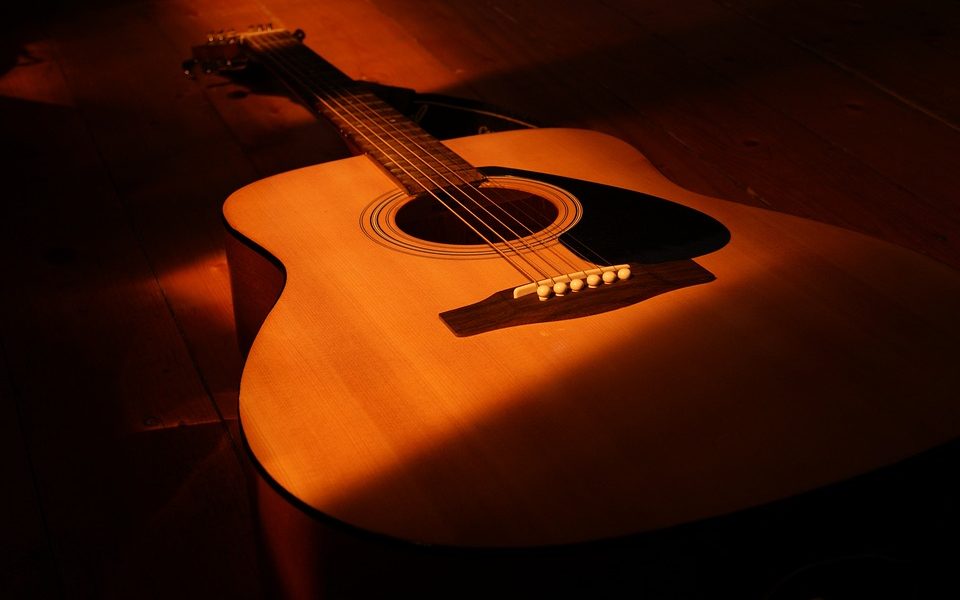Unlocking the Secrets of Guitar Chord Families: A Comprehensive Guide
Unlocking the Secrets of Guitar Chord Families: A Comprehensive Guide
As a guitarist, understanding chord families is essential for creating harmonious and melodious music. Chord families are groups of chords that share similar characteristics and are related to each other based on their notes and structures. By unlocking the secrets of guitar chord families, you will be able to enhance your playing skills, compose unique music, and improvise with ease. In this comprehensive guide, we will explore the different chord families and how you can use them to take your guitar playing to the next level.
What are Chord Families?
Chord families are groups of chords that are derived from a particular scale or key. In music theory, chords are built using the notes of a scale, and each chord in a family is related to the others based on the scale they are derived from. Understanding chord families allows you to create cohesive progressions, improvise more confidently, and compose music that flows seamlessly.
There are several chord families in music theory, each with its unique characteristics and sound. The most common chord families include major, minor, dominant, diminished, and augmented chords. By learning the notes and structures of these chord families, you will be able to navigate the fretboard with ease and play a wide range of music styles.
Major Chord Family
The major chord family is one of the most versatile and widely used chord families in music. It consists of three notes – the root, major third, and perfect fifth – and has a bright and uplifting sound. Major chords are commonly used in pop, rock, country, and jazz music and are excellent for creating a sense of resolution and stability in a progression.
To build a major chord, you take the root note of the scale and add the major third and perfect fifth above it. For example, in the key of C major, the C major chord consists of the notes C, E, and G. By exploring the major chord family across the fretboard, you can create rich and melodic chord progressions that are sure to captivate your audience.
Minor Chord Family
The minor chord family is another essential component of guitar playing, known for its melancholic and emotional sound. Minor chords are built by lowering the third note of a major chord by a half step, creating a darker and more introspective tone. Minor chords are commonly used in blues, rock, and classical music to add depth and complexity to a progression.
To build a minor chord, you take the root note of the scale and add the minor third and perfect fifth above it. For example, in the key of A minor, the A minor chord consists of the notes A, C, and E. Exploring the minor chord family on the fretboard will allow you to experiment with different voicings and create hauntingly beautiful melodies that resonate with your audience.
Dominant Chord Family
The dominant chord family is characterized by its tension and instability, making it an excellent choice for creating tension and anticipation in a progression. Dominant chords are built by lowering the seventh note of a major scale by a half step, creating a sense of movement and resolution. Dominant chords are commonly used in jazz, blues, and funk music to add a sense of groove and rhythm to a composition.
To build a dominant chord, you take the root note of the scale and add the major third, perfect fifth, and minor seventh above it. For example, in the key of G major, the G dominant chord consists of the notes G, B, D, and F. By exploring the dominant chord family on the fretboard, you can create dynamic and energetic progressions that will keep your audience on the edge of their seats.
Diminished Chord Family
The diminished chord family is known for its dissonant and tense sound, making it a favorite among composers looking to add a sense of mystery and intrigue to their music. Diminished chords are built by lowering both the third and fifth notes of a major chord by a half step, creating a sense of unease and suspense. Diminished chords are commonly used in classical, jazz, and metal music to add a touch of darkness and complexity to a progression.
To build a diminished chord, you take the root note of the scale and add the minor third and diminished fifth above it. For example, in the key of D major, the D diminished chord consists of the notes D, F, and Ab. By exploring the diminished chord family on the fretboard, you can create hauntingly beautiful melodies and suspenseful progressions that will captivate your audience.
Augmented Chord Family
The augmented chord family is characterized by its bright and airy sound, making it an excellent choice for creating a sense of tension and excitement in a progression. Augmented chords are built by raising the fifth note of a major chord by a half step, creating a sense of suspense and anticipation. Augmented chords are commonly used in jazz, classical, and experimental music to add a touch of whimsy and intrigue to a composition.
To build an augmented chord, you take the root note of the scale and add the major third and augmented fifth above it. For example, in the key of E major, the E augmented chord consists of the notes E, G#, and B#. By exploring the augmented chord family on the fretboard, you can create dreamy and otherworldly progressions that will transport your audience to another realm.
Conclusion
Unlocking the secrets of guitar chord families is essential for creating harmonious and melodious music. By understanding the characteristics and structures of major, minor, dominant, diminished, and augmented chords, you will be able to navigate the fretboard with ease, compose unique music, and improvise with confidence. Experiment with different voicings, explore new progressions, and let your creativity soar as you unlock the hidden potential of guitar chord families. With practice and dedication, you will be able to take your guitar playing to new heights and create music that truly resonates with your audience.






